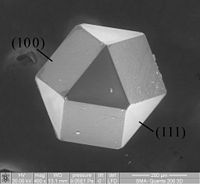
Photo from wikipedia
The aim of this article is to provide an overview of the orthogonal array composite design (OACD) methodology, illustrate the various advantages, and provide a real‐world application. An OACD combines… Click to show full abstract
The aim of this article is to provide an overview of the orthogonal array composite design (OACD) methodology, illustrate the various advantages, and provide a real‐world application. An OACD combines a two‐level factorial design with a three‐level orthogonal array and it can be used as an alternative to existing composite designs for building response surface models. We compare the D$$ D $$ ‐efficiencies of OACDs relative to the commonly used central composite design (CCD) when there are a few missing observations and demonstrate that OACDs are more robust to missing observations for two scenarios. The first scenario assumes one missing observation either from one factorial point or one additional point. The second scenario assumes two missing observations either from two factorial points or from two additional points, or from one factorial point and one additional point. Furthermore, we compare OACDs and CCDs in terms of I$$ I $$ ‐optimality for precise predictions. Lastly, a real‐world application of an OACD for a tuberculosis drug combination study is provided.
Journal Title: Statistics in Medicine
Year Published: 2022
Link to full text (if available)
Share on Social Media: Sign Up to like & get
recommendations!